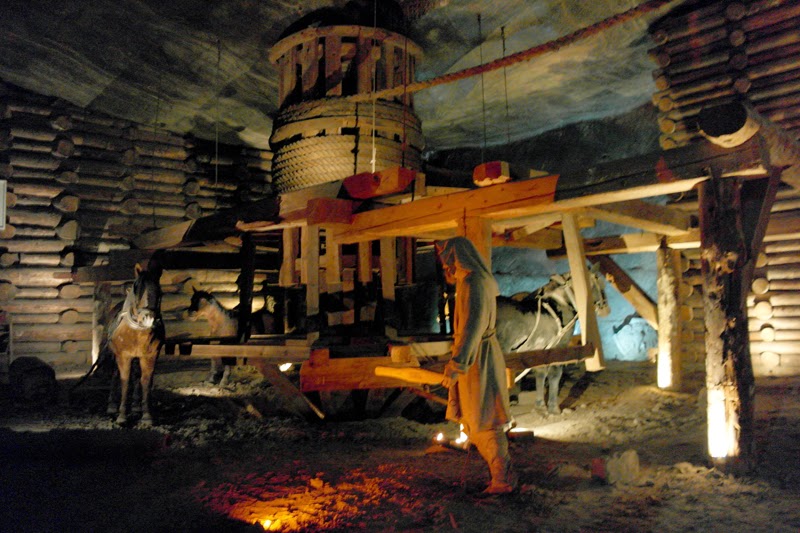Have you ever seen such a beautiful chapel.. underground? To get there, we had to walk down 380 steps round and round a stairwell. There are 9 storeys in the salt mine but only 3 floors are open to visitors. The air was really cooling down there and according to our guide, the air is good for health.. every breath adds a few years to your life span which is why there's a fitness centre built in the mine. She urged us to take as many deep breaths as possible haha.


The inside of the salt mine. The first picture looks like a stale cauliflower and the second picture looks like the inside of a freezer. The guide told us to feel free to give the walls a lick (she recommended the ceiling since they are the 'cleanest').



We saw many exhibits of how miners worked in the mines, they even brought horses down under! The horses made their job a lot easier and the guide kept stressing that this is a salt mine so the horses were not blinded (unlike in a coal mine but I googled and apparently the horses were not blinded due to the coal, but old age.. hmm..). There's a model of how the pulleys worked. And when you're climbing up and down the steps in the salt mine, you'll realise they are extremely shallow and rather slippery. I can't imagine how the miners carried blocks of salt up and down these tiny steps.
Can you guess who this is? Honestly I thought it was a woman but it turns out to be a man. It's Nicolaus Copernicus!! He's a Polish (I didn't know that) astronomer and mathematician who came up with the heliocentric model of the universe - aka we are not the centre of the universe! It's the sun that is. And hey, I visited the college that he went to! Collegium Maius, literally Great College in Latin.

This is a story about a Hungarian princess called Princess Kinga. According to legend, when Princess Kinga was to marry a Polish king, her father wanted to send gold and silver to the Poles but Kinga asked for a salt mine instead since Poles had gold and silver but they did not have much needed salt. The king agreed and Princess Kinga simply dropped her engagement ring into one of the Hungarian salt mine before going to Poland.
After her wedding in Krakow, she went for a trip to a nearby town of Wieliczka and she ordered to dig a well. People who dig the well had to stop because they encountered a hard stone. She then ordered to lift up a chunk of the stone - it was a pure salt with Kinga's ring inside. Princess Kinga thus became the guardian angel of miners in and around Krakow (via
here).
King Casimir the Great. They were all carved by the miners! Amazing handiworks.

There are even lakes inside the mine. There used to be a boat to take visitors for a ride but it was removed after one boat capsized and the people were trapped under the boat because they could not surface dive due to buoyancy of the extremely salty water.. And so they suffocated/drowned. :(
Due to the dangerous nature of their job, miners built many chapels to pray for safety. And one such chapel was the breath-taking St. Kinga chapel. The beautiful chandeliers were carved from salt! Can you imagine? I was so blown away. And all the carvings along the walls were done by the miners, impressive! Just in case you're wondering, you can get married here but it will probably cost an extravagant amount.
Carving of Pope John Paul II who was one of the most influential leaders of the 20th century. He was known for his humour and wit too. Our walking guide in Warsaw told us that once he was on a flight and he wasn't feeling too good so the air stewardess asked if he'd like a glass of wine to help him relax. Pope John asked how high they were flying and when he heard the stewardess' reply, he said "Ah that's too bad. My boss is too near." ;)
After the end of the tour, we were brought to souvenir shops where you can get salt for cooking, bathing, etc. Then we took this traditional old lift up to the surface. It was just a metal cage and rather flimsy too but it was so fun!
How to get there?
I booked a tour with Cracow Tours which is the cheapest tour around town, 68 PLN for students. But the salt mine is actually just 20+ minutes away and I met a Polish guy in my hostel who told me I could have easily taken a bus there, get an entrance ticket and join the English tour happening every hour.







































































